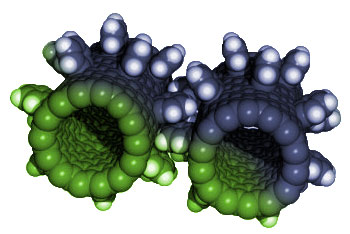| |
Highway transportation research is collecting and analyzing an increasing amount of video data. Reasons include recent technological breakthroughs that provide new and enhanced visual and other sensors for conducting research in multiple areas such as system planning, operations, safety, and infrastructure condition assessment.
The Strategic Highway Research Program (SHRP) 2 safety area includes elements of the above types of data in the naturalistic driving study. The amount of data can be orders of magnitude larger than what the highway research has worked with previously with research results expected to exceed one petabyte. See http://www.trb.org/StrategicHighwayResearchProgram2SHRP2/Public/Pages/Safety_153.aspx, for more information on the SHRP2 safety area.
While the research community is fortunate to be able to collect more and better data, the amount of data has the potential to overwhelm the capacity to assess the data using current methods. Current methods include a mix of automated and manual, frame-by-frame coding that is not able to manage massive data stream and provides results that are not consistent or error free enough.
ITS America conducted a technology scan for the USDOT Intelligent Transportation Systems (ITS) Joint Program Office. The scan report, "Connected Vehicles: Trends in Computer Vision," are located at http://www.itsa.org/knowledgecenter/technologyscan. As the technology moves from stand alone to integrated systems and from systems that provide driver or operator warnings to direct control of vehicle and infrastructure systems (i.e. steering, acceleration, braking, taffic signals) there is a critical need for compatable systems architecture and common conditions against which multiple manufacturers can test their equipment and software.

Brochures |
|
Brochure : Exploratory Advanced Research Program (FHWA-HRT-12-019)- November 2011 |
Multimedia Downloads |
|
Investigating Advanced Traffic Signal Control, (N/A)- April 2011 |
Project Fact Sheets |
|
The Exploratory Advanced Research Program Fact Sheet - Mega-Regional Modeling: Examining Mega-Regional Travel,(FHWA-HRT-12-024)- January 2012 |
Reports |
|
Trends of Transportation Simulation and Modeling Based on a Selection of Exploratory Advanced Research Projects - Workshop Summary Report, August 2011,(FHWA-HRT-12-040)- July 2012 |
Scanning and Convening Activities Fact Sheets |
|
Fact Sheet: Exploring Bridge Maintenance and Asset Management,(FHWA-HRT-11-052)- June 2011 |
Summaries |
|
Executive Summary: Technological Innovations in Transportation for People with Disabilities: Workshop Executive Summary(FHWA-HRT-11-042)- September 2011 |
Web Articles |